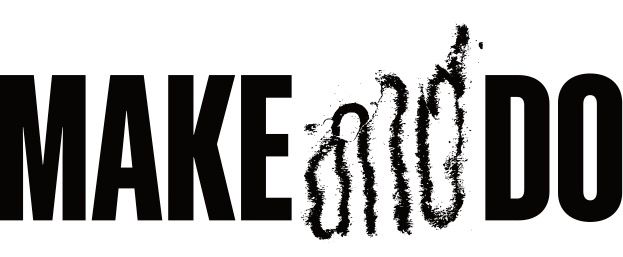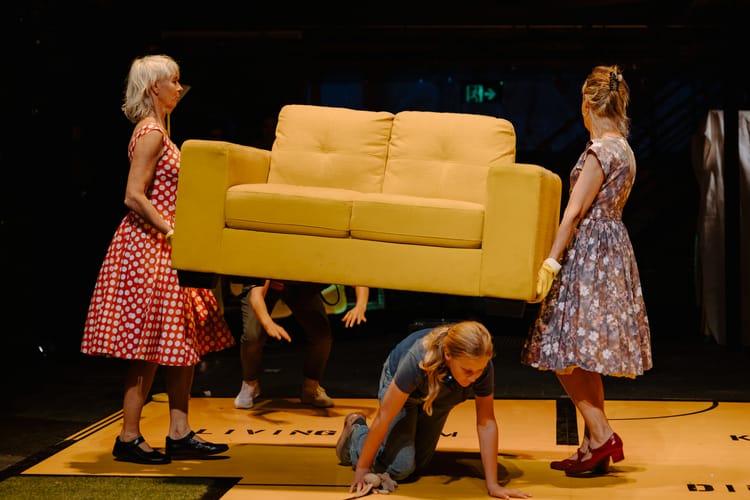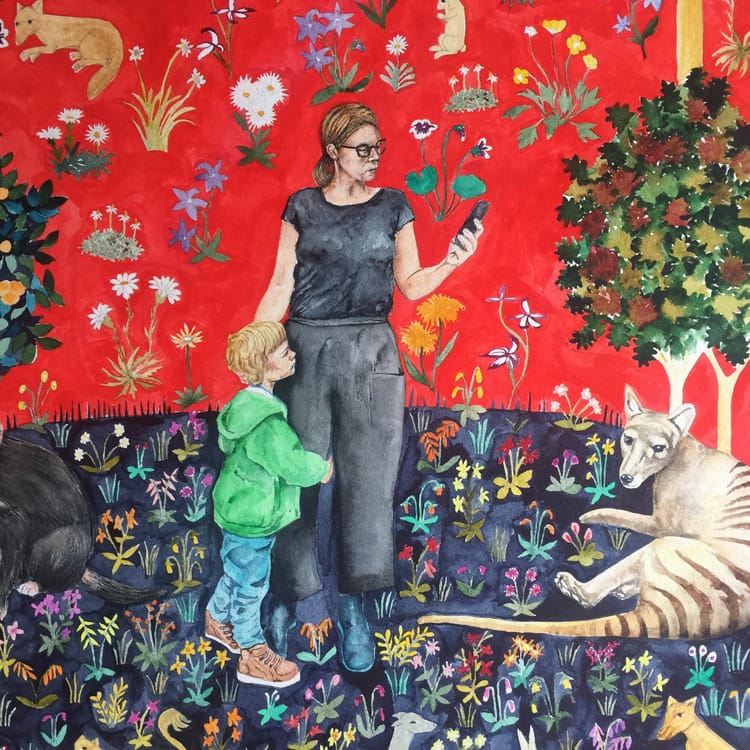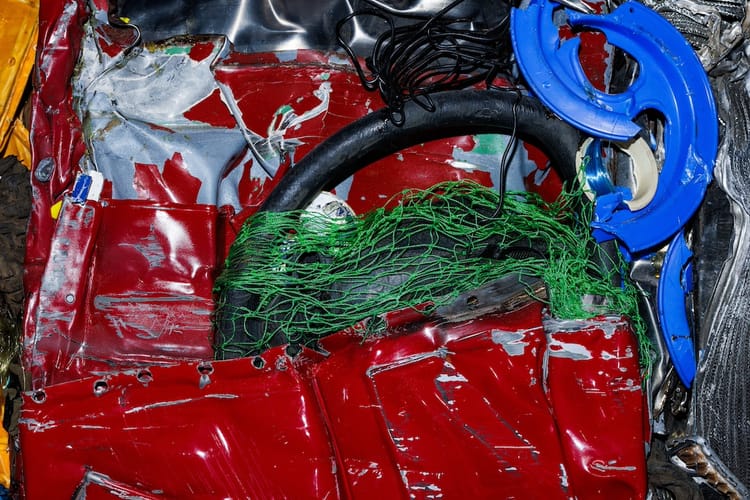Notes on Seaborne
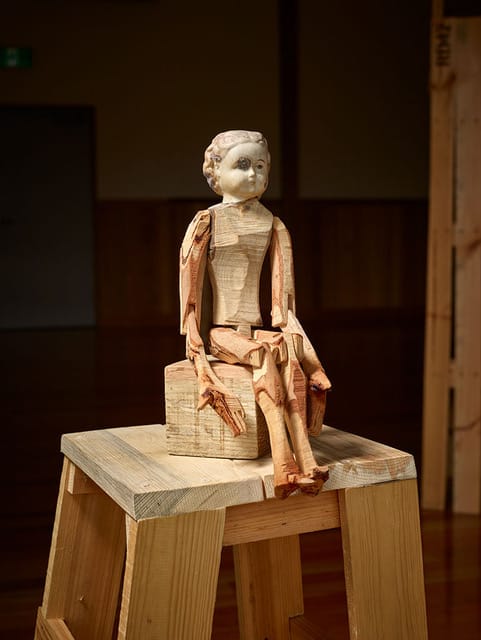
There is only one Gay Hawkes.
I must admit something: I am quite beguiled by this artist and her art. I was deeply affected by The House of Longing, a kind of retrospective that took place at TMAG in 2022. What made that show so very memorable for me was the presence of new work from Gay; she had, at that point, been sorely tested by life; it’s well known her studio, her home and a tremendous amount of her life’s work was destroyed in the 2013 Dunalley Bushfires.
She lost everything, basically.
But.
She did not lose her ability to create, and the House of Longing showed new work she had made since the fires, along with work that had not been present in Dunalley. It was just enough to describe an arc through her life: a remarkable narrative of resilience, and a portrayal of what it is that artists do: they make things. It’s that drive that defines artists to me: they make and they will do as much making as they are able to do, and that’s who they are. I know this is broadly reductive, but to me it casts artists as having an ability to survive and continue in whatever way they can, and that what defines artist isn't their work as much as their ability to make that work.
Gay Hawkes was living this in a very real way, and she was making art, and her art exudes this joy in creation, this affirmation.
I was quite thrilled to discover Gay had a new show, Seaborne, at Narryna. Narryna is a complex spot: it’s beautiful, and its evidence of the colonial era, built by Captain Andrew Haig, a merchant, shipbuilder and whaler, in 1840. The property itself became the first folk museum in Australia in 1955, and is now operated by a board and supported by Arts Tasmania and the TMAG.
In and of itself, Narryna is worth a visit; there are substantial collections and the building itself is a fine example of the Greek revival architectural style that was popular in the era Narryna was designed and built. The upstairs exhibition space is restored and cared for, but the signs of time are there: this is an older space. Gay’s work sits well in here: she uses lots of reclaimed wood, found objects and re-uses paper and cardboard. Before anything else, the very material Gay uses suggests to me that time passes. It’s reclaimed nature is important as well; Gay uses near entirely found and reclaimed materials, which has a lot of important implication; it is art that is based around having to some extent time to seek out objects and perhaps a space to store them; but it's also good economic sense: found materials are probably low in cost. Ethically, the use of found and reclaimed materials is a strong standpoint; it speaks as well to artisanship and the ability to make new from ruin. Use what is there. That says something, and creates a pointed aesthetic.
I’m a generation X type who grew up with the notion of apocalypse and dystopia in my imagination (it was very common in what I consumed), and the aesthetics I find in Gay’s art and design reflect that, although it’s also real: there is an aspect of everything that Gay has made since 2013 that is actually post-apocalyptic; apocalypses can be localized, and even personal, so here we have an older woman as Mad Max around the Southern Beaches region, if you will. It’s pertinent to understand her work being informed by an awareness of climate breakdown as real; as a genuine, terrifying, destructive force. It is however, a force that the artist herself has survived and in her resilience, does what she has always done, and makes new art. This is why the notion of her making anything seemed so totally heroic to me; in the face of loss and destruction so total and terrifying, making new art is defiant.
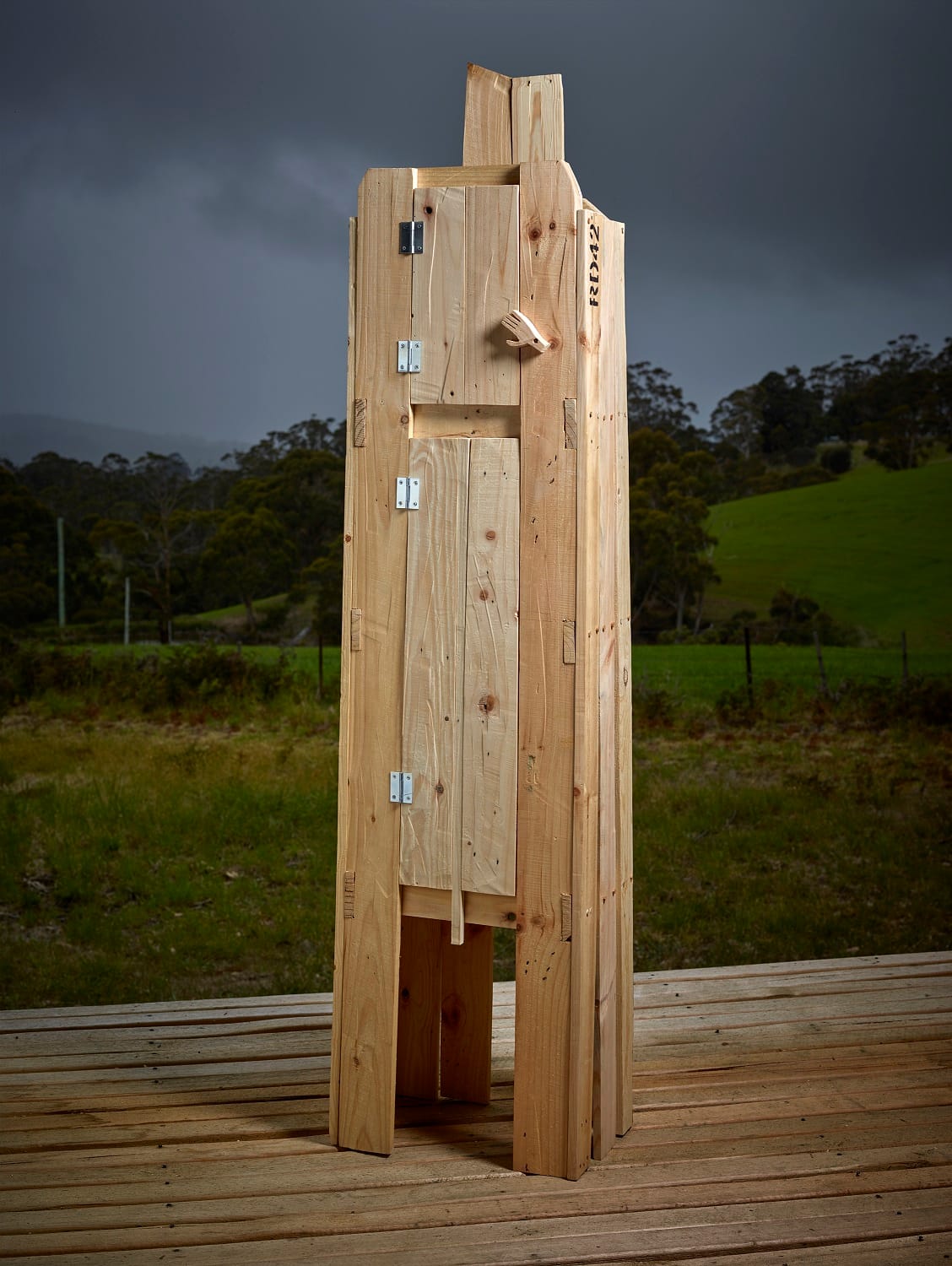
Her work did change after 2013. Seaborne is all work that arrives from where Gay is now, and while there is a lot of material that I would describe as beautiful, there’s also an urgency in the construction, as if the artist needs to build something that will function, will do its required job, as if that necessity is overbearing any need for something to be pretty – which makes it all really beautiful. Gay can’t help herself – her aesthetic is so strong that ever single thing looks amazing no matter what it is. I like everything here, but there were also surprises. There’s a display of artist’s books – small volumes that are hand made using reclaimed and found material – cardboard packaging, prints, sketches by Gay, and revealingly, bits of writing:
AND I SAW JESUS
Passing over in the dappled evening sky
Arms outstretched, soaring
I thought he’s come to save us
As he soared over Hobart
Up so high
But he was gone in the Sirius/Stratus/Cumulous
And I thought I heard him say
You down there don’t need me
You can get by
In your SUVs and your
Foolishness
There are other who need me
Beneath other skies
And so he was gone
And I trudged home wearily
Abandoned
In Australia with more fires
To come
This hit home.
Gaye has not forgotten what happened, and it’s interesting how she equates SUVs with foolishness; SUVs account some 20% of carbon emissions. If they were a country, they would be the fifth largest emitter of carbon on the planet. It’s reductive to suggest Gaye’s art since the fires has been largely about climate, but it seems to have powerfully informed her work. There is something about much of the work that suggests re-building, starting again, which is what she did in actuality, but also what she’s very plainly suggesting humanity has to do something : the current situation is untenable, and we all know.
There is more here than protest and warning though; everything in Seaborne looks like a suggestion, as a way to proceed and survive whatever is coming. Gay will use what is literally around her, and in doing so, she speaks out against destructive consumption. It suggests we already have enough and that we can still have beautiful things, and that beauty is there for us to use. Which is, in the end, about hope. This is what wrenches this work somewhere completely special for me: I understand it as stating that there is hope, and that actually, people can rebuild and learn, that the skills to do so already exist. That this statement comes from a person who has genuinely experienced a loss so total is humbling and inspiring, and it speaks to a belief in creativity, in art, and in survival. It’s not naïve either: there are, as written, more fires to come.
There’s a warning implicit in every artwork in this exhibition.
Seaborne is not one-note though; it is also about sifting and finding things, and working out how to put them to use. Gaye Hawkes is extremely good at this; she finds incredible things to make with. Her practice is total: she paints, writes, makes furniture and sculpture. Her work is rugged, raw and gorgeous: she paints on cardboard and makes her own books. Her life has been one dedicated to creation, and it’s through creation that she has navigated the worst life can hurl at one person. It’s remarkable and it’s moving. It is art that only one person could make, yet it challenges you to find something in yourself that you too can do: there’s an implied sharing in everything here.
This is art that is drawn most resolutely from the life and character of the artist. It is borne of her history and experience, and as such, it is unique.
Or perhaps, I can just say this: there’s only one Gay Hawkes.
